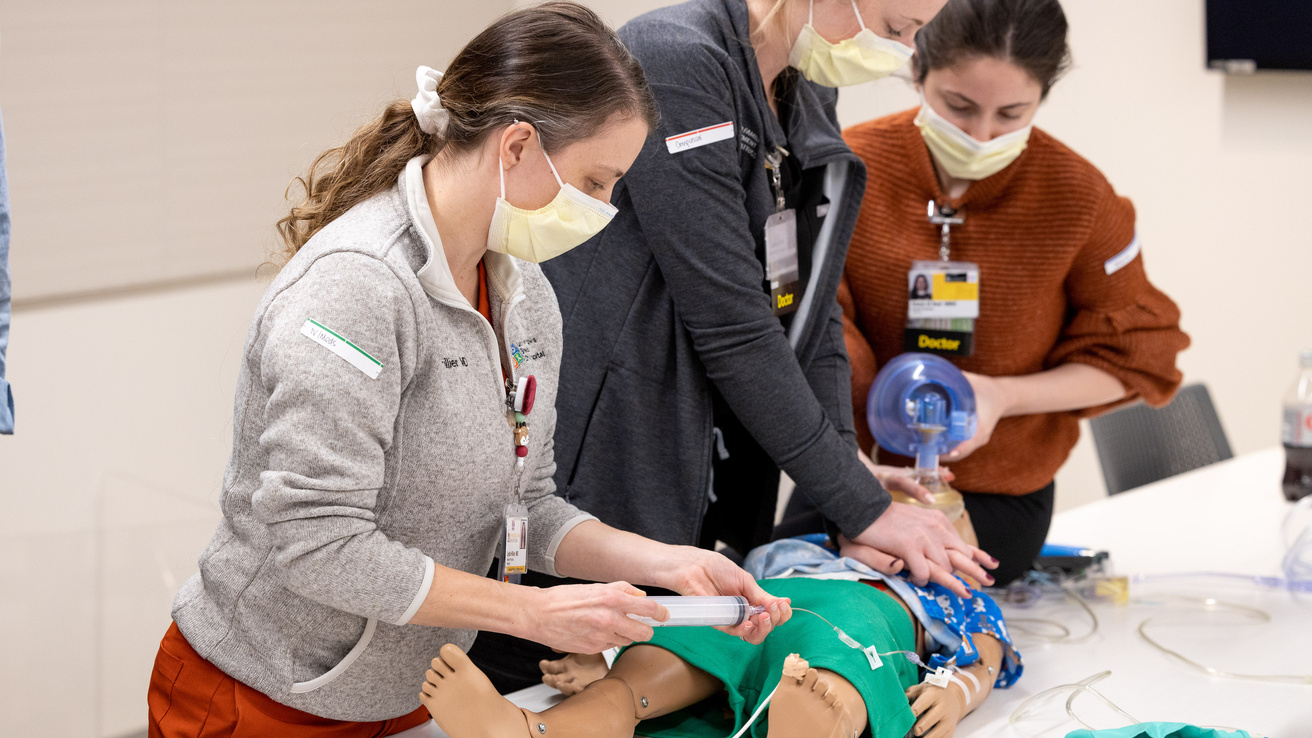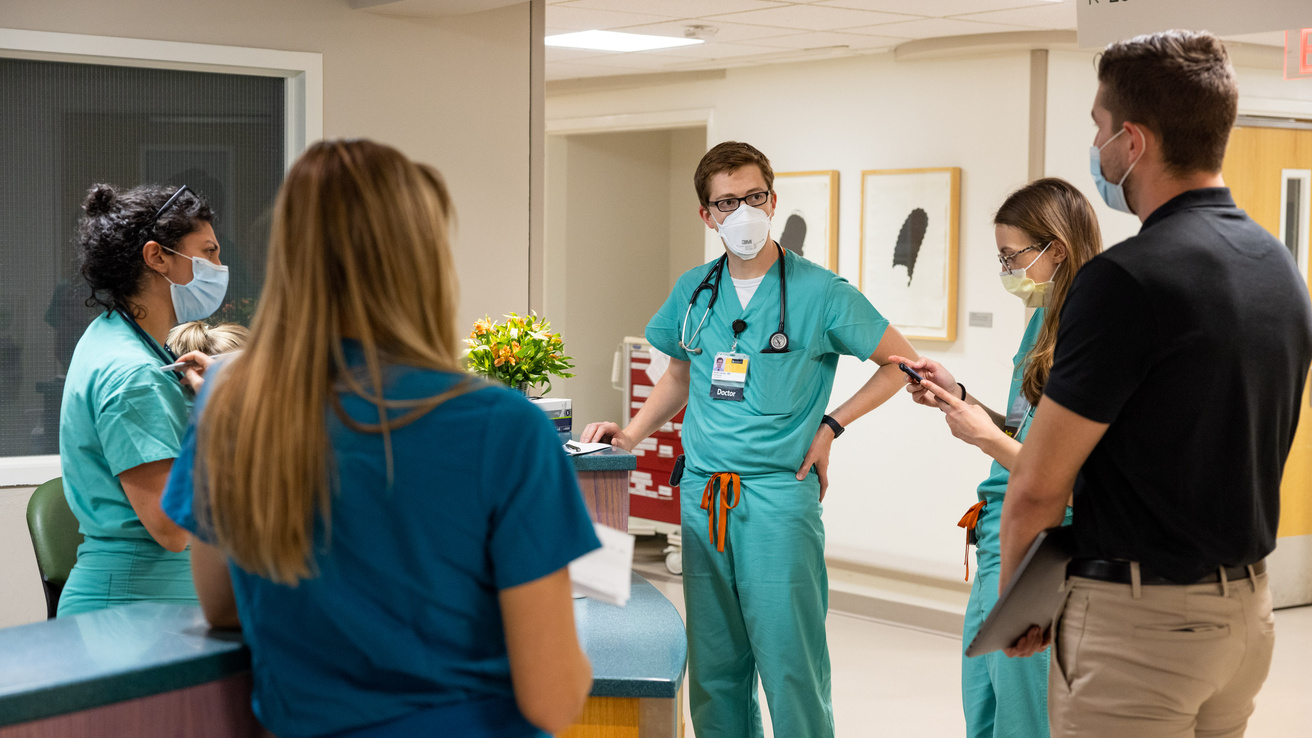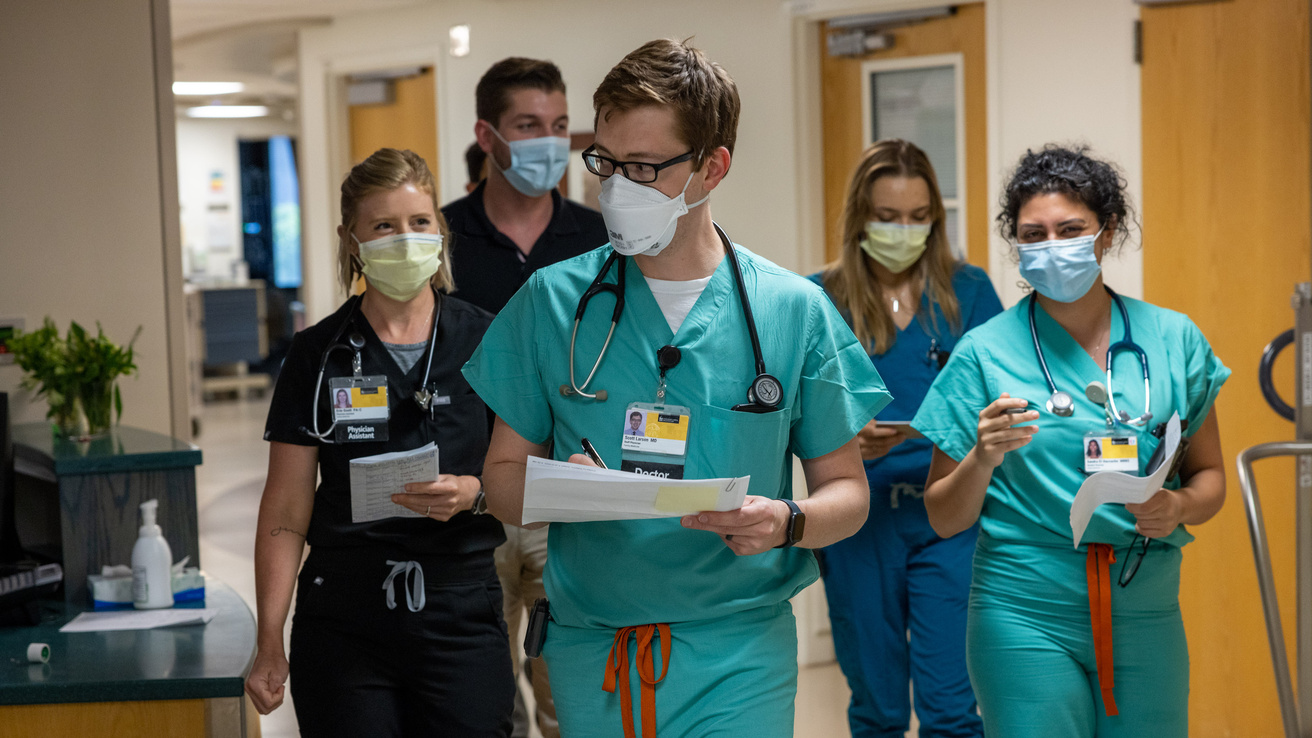Main navigation
The pediatric residency training program at University of Iowa Health Care Stead Family Children’s Hospital lasts three years and provides each resident physician with a sufficiently diverse experience.
To view a summary of all three years of the residency training program, download our training outline.
Intern Year
Your first year of residency is designed to build a strong foundation in caring for children of all ages and levels of medical complexity.
From day one, you’ll learn how to distinguish the well child from the seriously ill, with close guidance from senior residents and faculty across all pediatric subspecialties.

Broad Clinical Exposure
- Inpatient, critical care, and nursery rotations give you intensive exposure to hospitalized children.
- Outpatient general pediatrics clinic offers a wide range of primary care and urgent care experiences.
- Developmental-behavioral pediatrics rotation introduces you to our comprehensive developmental center.
- Electives: Every intern chooses two outpatient subspecialty electives plus a scholarship elective to individualize training.
Flexible Rotation Structure
Intern year is built around 16 three-week rotations. This structure provides:
- A balance between delivering inpatient and outpatient care.
- Repeated experiences across three trimesters, so you can appreciate seasonal variability in both inpatient and outpatient care.
Continuity Clinic
From the start of intern year, you’ll begin building your own patient panel in continuity clinic.
- Full-day clinics occur during ambulatory and elective rotations, allowing you to focus on one role at a time.
- Patients see a consistent clinic team but identify one resident as their primary provider, creating meaningful relationships over three years.
- Patient panels are developed through inpatient, nursery, and general pediatrics experiences, ensuring exposure to a diverse range of ages, backgrounds, and medical conditions—including children with complex or chronic needs followed at Stead Family Children’s Hospital.
Second Year
The second year of training expands your experience, responsibility, and career exploration.
You’ll build on the foundation of intern year while stepping into more supervisory and specialized roles.

Subspecialty Training
- Three required pediatric subspecialty rotations chosen from: allergy-immunology, cardiology, child protection, endocrinology, gastroenterology, hematology/oncology, infectious diseases, medical genetics, medical toxicology, neurology, nephrology, pain, palliative care, pediatric dermatology, pulmonology, rheumatology, sleep medicine, sports medicine.
- During these rotations, you’ll evaluate patients in outpatient clinics, provide consultative services to the hospital, and participate in relevant procedures.
Critical Care & Supervisory Roles
- Continued exposure to the sickest patients in both the pediatric ICU and neonatal ICU.
- Supervisory experience on inpatient wards and in general pediatrics clinic, where you’ll lead junior residents and medical students.
Community & Emergency Medicine Experiences
- A rotation in a local private general pediatrics practice to see pediatrics in a community-based setting.
- A rotation in a busy urban children’s emergency department in Des Moines, Iowa, with travel and lodging provided by the program.
Career Development
- Residents may also select one additional elective.
- Specialized learning opportunities include research, multidisciplinary case conferences, and focused educational sessions.
- Many residents use this year to refine interests and chart their career path.
- The Career Elective provides a mentored, customizable opportunity to design a rotation that includes clinical, educational, administrative, or research experiences aligned with your goals.
Senior Year
The final year of pediatric residency is designed to prepare you for independent practice or subspecialty fellowship by emphasizing leadership, autonomy, and advanced clinical judgment.

Leadership & Supervision
- Serve as the senior resident and team leader on our pediatric inpatient units.
- Additional leadership opportunities are tailored to your career path (e.g., ICUs, general pediatrics clinic, subspecialty services).
- Act as the first-line consultant and supervisor for interns and medical students, gaining valuable experience in patient care, teaching, and team management.
- Continue working in pediatric subspecialty clinics and the emergency department as a trusted, experienced member of the team.
Individualized Training
- Across all three years, residents have the flexibility to design a personalized mix of clinical, research, and procedural experiences.
- In senior year, three rotations are dedicated to individualized training. With support from program leadership, your program mentor, and divisional resources, you’ll shape a curriculum tailored to your goals.
- Senior year also offers a longitudinal experience within your future field: once per quarter, residents complete a focused elective week designed to better prepare them for the patients they’ll care for as general pediatricians or fellows the following year.
Preparation for the Next Step
- By the end of senior year, you’ll have honed the judgment, leadership, and teaching skills needed to thrive as a general pediatrician or to confidently enter fellowship training.